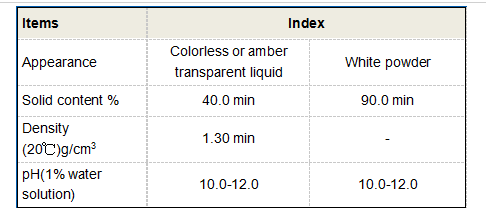Exploring the Various Applications of Anionic Polyacrylamide in Industrial and Environmental Settings
Anionic Polyacrylamide Versatile Applications and Benefits
Anionic polyacrylamide (APAM) is a synthetic polymer widely recognized for its unique properties and functionalities, making it an invaluable resource across various industries. This water-soluble polymer is created through the polymerization of acrylamide monomers, yielding a polymer that can be tailored for specific applications by adjusting its molecular weight and degree of anionic charge. The presence of negatively charged groups in APAM allows for effective interactions with positively charged substances, enhancing its utility in numerous applications.
One of the most prominent uses of anionic polyacrylamide is in water treatment processes. APAM serves as a flocculant, aiding in the aggregation of suspended particles and facilitating their removal from water bodies. In industries such as municipal water treatment, wastewater management, and water recycling, APAM enhances sedimentation rates by promoting the formation of larger flocs that can be easily separated from the liquid phase. This not only improves the efficiency of clarifying processes but also contributes to the overall quality of treated water, making it safer for human consumption and environmental discharge.
Anionic Polyacrylamide Versatile Applications and Benefits
The mining and mineral processing industries also benefit significantly from the use of anionic polyacrylamide. In mineral processing operations, APAM is used as a flocculant to enhance the separation of valuable minerals from waste materials during the extraction process. Its ability to bind with specific minerals aids in the efficient recovery of metals, reducing waste and improving the economic viability of mining operations. Furthermore, in tailings management, APAM helps in the thickening and dewatering processes, reducing the volume of waste that needs to be treated and contained.
anionic polyacrylamide uses

Another important application of anionic polyacrylamide is in the construction industry, particularly in the production of cement and concrete. APAM acts as a plasticizer, improving the workability of concrete mixtures without the need for excessive water. This not only enhances the strength and durability of the final product but also minimizes cracking and segregation. Moreover, in road construction, APAM is used in soil stabilization, which enhances the load-bearing capacity of roads and reduces maintenance costs.
In addition to these applications, APAM has found its place in the paper manufacturing industry, where it is used as a retention aid and a drainage aid. By enhancing the retention of fine particles and fillers in the paper-making process, it improves the quality of the final product while also optimizing resource utilization.
Despite its benefits, it is essential to handle anionic polyacrylamide with care due to its potential environmental concerns. Responsible use and proper regulation are crucial to minimize any adverse effects on ecosystems and human health.
In conclusion, anionic polyacrylamide is a multifunctional polymer with wide-ranging applications in water treatment, agriculture, mining, construction, and paper manufacturing. Its ability to enhance processes, improve efficiency, and support environmental sustainability underscores its importance in modern industry. As innovations continue to evolve, the versatility of APAM will likely expand further, solidifying its role as a key component in various industrial applications.
-
Water Treatment with Flocculant Water TreatmentNewsJun.12,2025
-
Polymaleic AnhydrideNewsJun.12,2025
-
Polyaspartic AcidNewsJun.12,2025
-
Enhance Industrial Processes with IsothiazolinonesNewsJun.12,2025
-
Enhance Industrial Processes with PBTCA SolutionsNewsJun.12,2025
-
Dodecyldimethylbenzylammonium Chloride SolutionsNewsJun.12,2025





